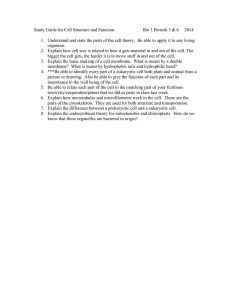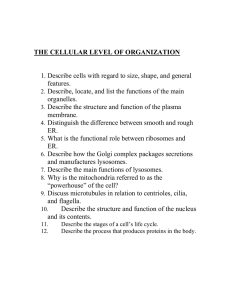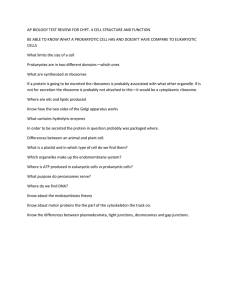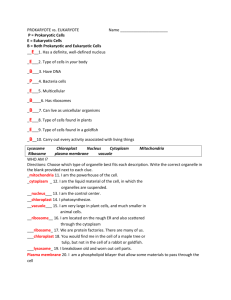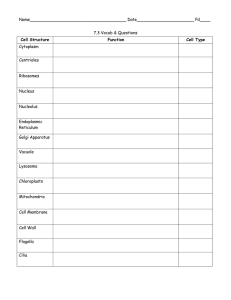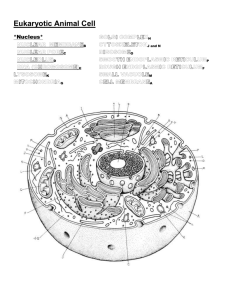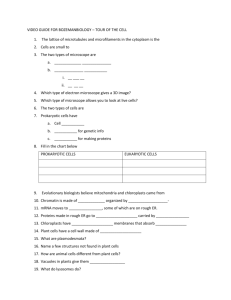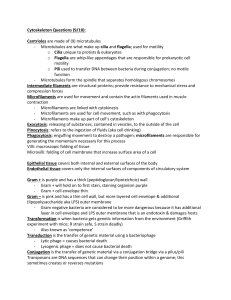Study Questions for Bio 101 Cell Structure and Function
advertisement
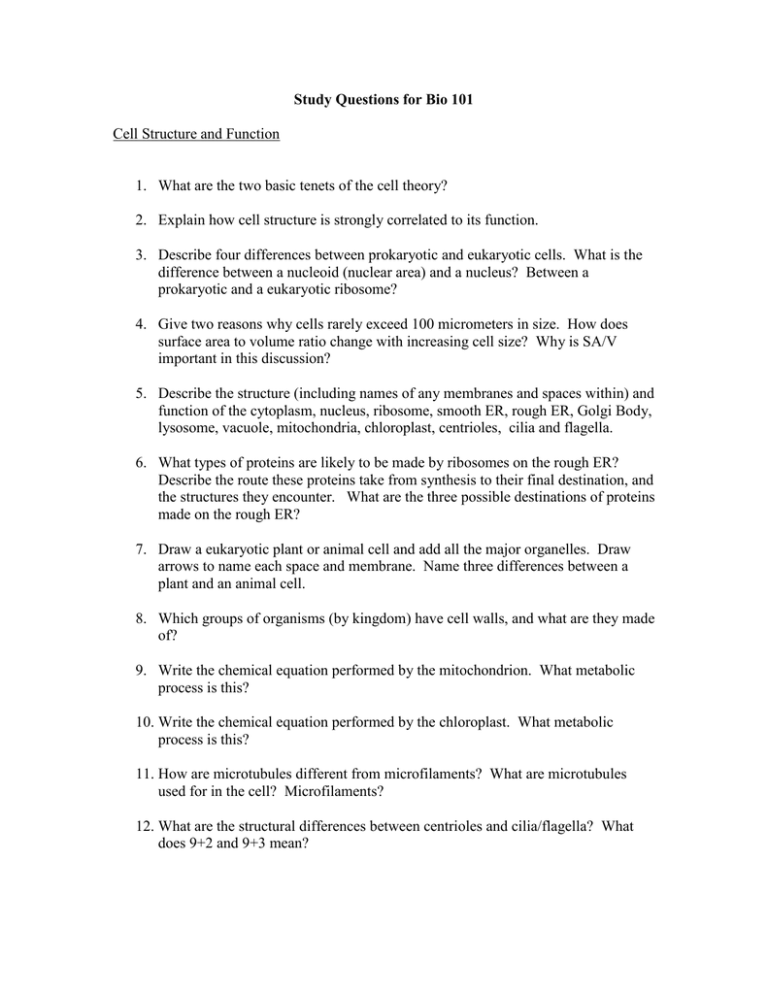
Study Questions for Bio 101 Cell Structure and Function 1. What are the two basic tenets of the cell theory? 2. Explain how cell structure is strongly correlated to its function. 3. Describe four differences between prokaryotic and eukaryotic cells. What is the difference between a nucleoid (nuclear area) and a nucleus? Between a prokaryotic and a eukaryotic ribosome? 4. Give two reasons why cells rarely exceed 100 micrometers in size. How does surface area to volume ratio change with increasing cell size? Why is SA/V important in this discussion? 5. Describe the structure (including names of any membranes and spaces within) and function of the cytoplasm, nucleus, ribosome, smooth ER, rough ER, Golgi Body, lysosome, vacuole, mitochondria, chloroplast, centrioles, cilia and flagella. 6. What types of proteins are likely to be made by ribosomes on the rough ER? Describe the route these proteins take from synthesis to their final destination, and the structures they encounter. What are the three possible destinations of proteins made on the rough ER? 7. Draw a eukaryotic plant or animal cell and add all the major organelles. Draw arrows to name each space and membrane. Name three differences between a plant and an animal cell. 8. Which groups of organisms (by kingdom) have cell walls, and what are they made of? 9. Write the chemical equation performed by the mitochondrion. What metabolic process is this? 10. Write the chemical equation performed by the chloroplast. What metabolic process is this? 11. How are microtubules different from microfilaments? What are microtubules used for in the cell? Microfilaments? 12. What are the structural differences between centrioles and cilia/flagella? What does 9+2 and 9+3 mean? 13. What are the functions of glycoproteins and glycolipids on the outsides of animal cells?
